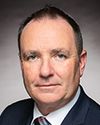Mr. Speaker, in response to part (a) of the question, the minister has a standing weekly meeting with the deputy minister and this issue was frequently discussed.
With respect to part (b) of the question, the employment insurance, or EI, program is designed to respond automatically to changes in economic conditions that affect local labour markets. The EI program divides the country into 62 economic regions. When a region’s unemployment rate changes, the entrance requirements for EI regular benefits adjusts automatically in response. In general, when a region’s unemployment rate rises, these entrance requirements are reduced, and the maximum entitlement for regular benefits increases. When the unemployment rate decreases, entrance requirements increase and the maximum number of weeks that an eligible claimant can receive decreases.
There are two EI economic regions in the province of Newfoundland and Labrador: St. John’s and Newfoundland and Labrador (excluding the capital). On August 6, 2023, the unemployment rate in the EI economic region of Newfoundland and Labrador decreased from 13.7% to 12.9%. This means that the minimum amount of insurable earnings from fishing required to access EI fishing benefits for self-employed fishers residing in this region increased from $2,500 to $2,700 for the period between August 6 and September 9, 2023. For the EI economic region of St. John’s, the unemployment rate increased from 5.1% to 6.0% during this same period. Under the rules of the EI program, this increase has not had any impact on the minimum insurable earnings from fishing required to access EI fishing benefits – threshold remained unchanged at $4,200 for self-employed fishers residing in this region.
Most self-employed fishers in the EI economic region of Newfoundland and Labrador qualify for EI fishing benefits with considerably higher earnings than the minimum entrance requirement. For example, in 2022, the average insurable earnings of self-employed fishers used to qualify for EI fishing benefits in the EI region of Newfoundland and Labrador were $15,388. In past years, a very small number of self-employed fishers, namely fewer than 25, from the EI region of Newfoundland and Labrador have qualified for EI fishing benefits with less than $2,700 in insurable earnings. Given that the snow crab fishing season was extended this summer, it is expected that very few self-employed fishers would no longer be able to access EI fishing benefits due to the increase from $2,500 to $2,700 in insurable earnings required to qualify in the EI economic region of Newfoundland and Labrador.
The decline in regional unemployment rates can also impact an EI fishing benefit claimant’s benefit rate. With the decrease in the unemployment rate from 13.7% to 12.9% in the EI economic region of Newfoundland and Labrador on August 6, 2023, the divisor used to determine a fisher’s weekly benefit rate increased from 14 to 15. This means that a fisher’s total earnings from fishing will be divided by 15 instead of 14 for the purposes of determining their weekly benefit amount which can result in lower weekly EI benefits. The exact impact that the decline in the unemployment rate will have on fishers’ weekly EI benefit rate is difficult to estimate, as it depends on a number of factors.
Under the rules of the EI program, to receive EI fishing benefits, a self-employed fisher must be unable to qualify for EI regular benefits. They must also have earned a minimum amount in insurable earnings from fishing during their qualifying period. The qualifying period for EI fishing benefits is the 31-week period preceding their claim, or since their last claim, whichever is shorter. The minimum amount of insurable earnings required to access EI fishing benefits varies between $2,500 and $4,200, depending on the unemployment rate in a claimant’s economic region.
Also, to be eligible to receive EI regular benefits, a worker must accumulate a minimum number of hours of insurable employment in their qualifying period. The qualifying period is the 52-week period preceding the start of their claim, or the period since the start their previous claim, whichever is shorter. The minimum number of hours varies between 420 and 700 hours, depending on the unemployment rate in a claimant’s economic region.
The weekly EI benefit rate is calculated using a claimant’s highest weeks of earnings, or best weeks, over the qualifying period. The number of best weeks used ranges from 14 to 22, depending on the unemployment rate in a claimant’s economic region.
With respect to part (c) of the question, at the time of writing, the government has not announced any measures to provide financial relief to impacted workers.
With regard to part (d) of the question, it is not applicable.



















